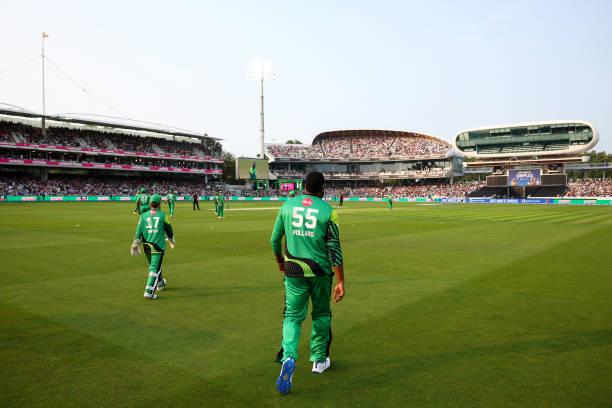Lord’s, the Home of Cricket, might be steeped in tradition, but in The Hundred, it’s turning into a venue where you require a lot of analysis, with the slope, different shape of the boundaries and the conditions differing a lot from pitch to pitch. Whether you’re building AI cricket models, forecasting match outcomes, or working on performance-based prediction systems, this ground has clear statistical patterns worth noting.

Let’s unpack what the Lord’s Pitch report numbers tell us heading into The Hundred 2025.
First Innings Scores – Low and Consistent
Scoring hasn’t exactly taken off at Lord’s in recent seasons. In fact, it’s one of the lowest-scoring venues in The Hundred.
| Season | Avg First Innings Score |
| 2022 | 139.4 |
| 2023 | 136.2 |
| 2024 | 130.0 |
The trend is clear, totals are dipping year on year. For those involved in first innings run prediction, this makes Lord’s a ground where chasing becomes less about giant totals and more about execution.
Wickets Across Innings – A Second Innings Spike
Here’s where it gets interesting. Lord’s is one of the few grounds where more wickets fall in the second innings.
- Avg Wickets (1st Innings): 6.46
- Avg Wickets (2nd Innings): 7.21
This suggests that while setting a score may be tough, chasing it down is far from a stroll. For those working on match momentum modelling or ball-by-ball prediction tools, this wicket surge in the second half could play a pivotal role in your simulations.
Pace vs Spin – Spinners Take Centre Stage
While Lord’s is often seen as a seamer’s ground in red-ball cricket, white-ball trends here flip the script in the Hundred.
| Type | Bowling Avg | Econ Rate | Wickets | Balls per Wicket |
| Pace | 21.86 | 8.43 | 117 | 15.5 |
| Spin | 17.43 | 7.67 | 71 | 13.6 |
Spinners not only take wickets more frequently, but they’re also more economical. This makes them gold dust in middle-overs analysis, bowling phase predictions, and even for planning defensive spells in tighter matches.
Toss Impact – Bat First for Better Odds
Unlike Kennington Oval cricket, lord’s cricket ground strongly favours sides that bat first.
| Result | Win % |
| Bat First | 57.2% |
| Bat Second | 42.8% |
This holds significant weight when forecasting match outcomes post-toss. Teams that manage to post even a par score (~135–145) tend to defend more successfully at lord’s cricket ground. If your model accounts for toss influence, you’ll want to bump up win probabilities for teams choosing to set a target here.
Key Takeaways for Cricket Analysts & Cricket prediction Enthusiasts
lord’s Cricket Ground may be traditional, but its T20 dynamics in The Hundred offer sharp modern insights:
- Low Scoring Venue – Rarely crosses 150 in first innings
- Second Innings Wickets Spike – Late-match collapses likely
- Spinners Outshine Pacers – More wickets, tighter economy
- Bat First Advantage – Winning ratio favours target-setters

For those fine-tuning AI prediction engines, live match forecasting, or phase-based risk models, Lord’s offers consistency in chaos. The narrative here isn’t explosive scoring, it’s about calculated defence, smart spin, and pressure batting.
Final Word – Play the Ground, Not Just the Game
In a format as tight as The Hundred, knowing your venue is everything. At Lord’s, teams must play clever, get runs on the board, lean on their spinners, and squeeze oppositions late.Whether you’re running data-led cricket prediction tools, working on performance-based insights, or just keeping an eye on ground-specific trends, lord’s cricket ground gives you data that speaks louder than any highlight reel.
Leave a Reply